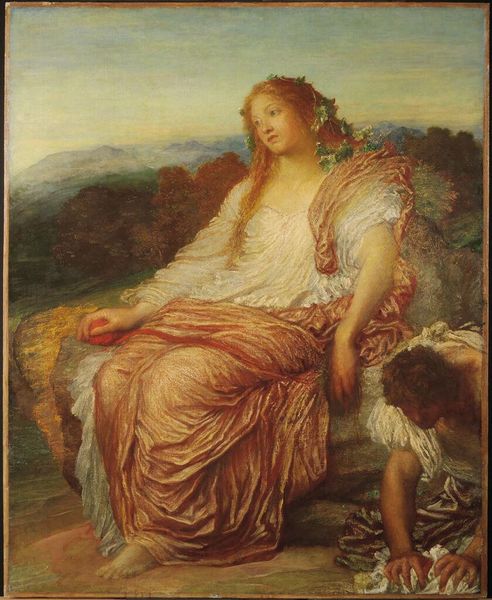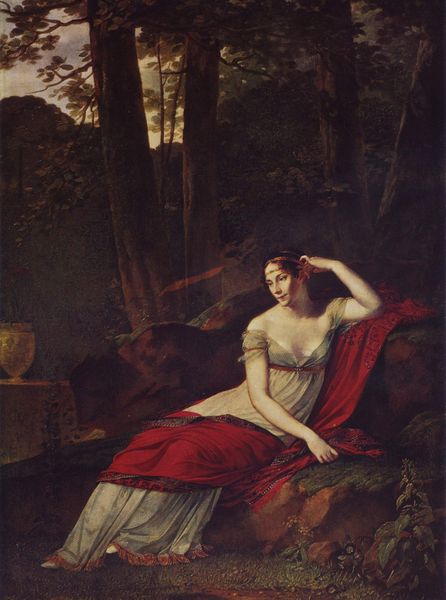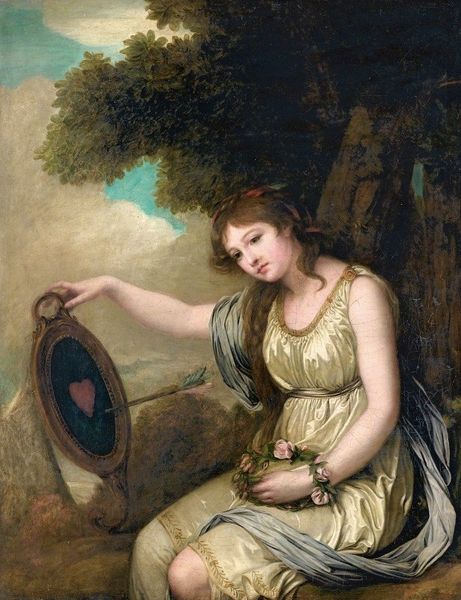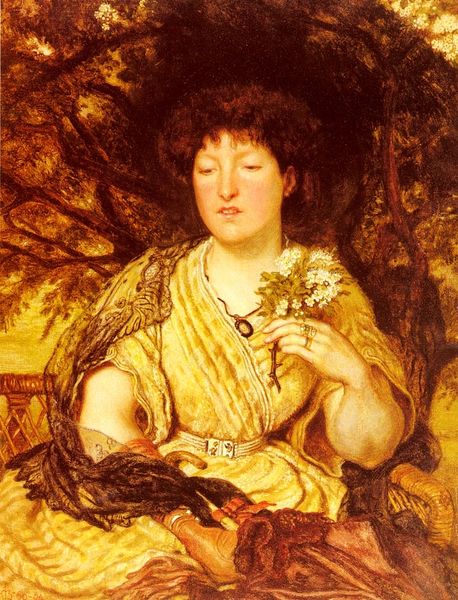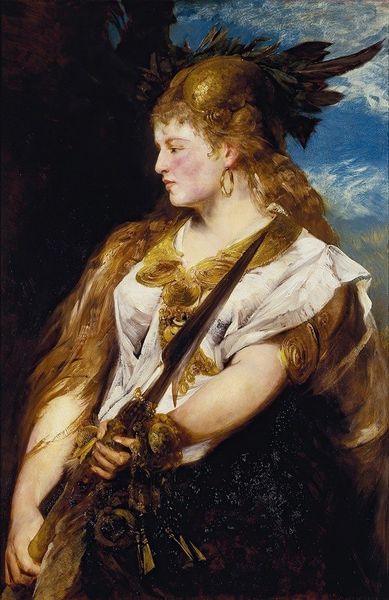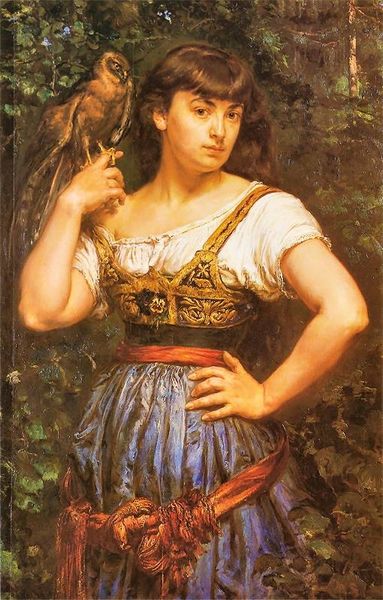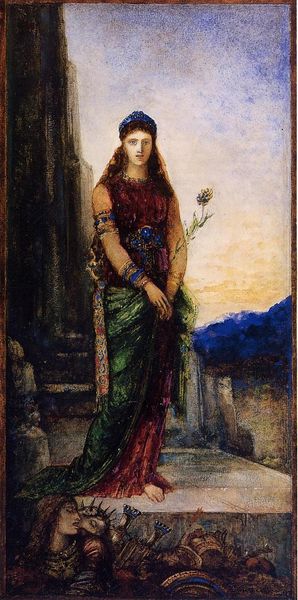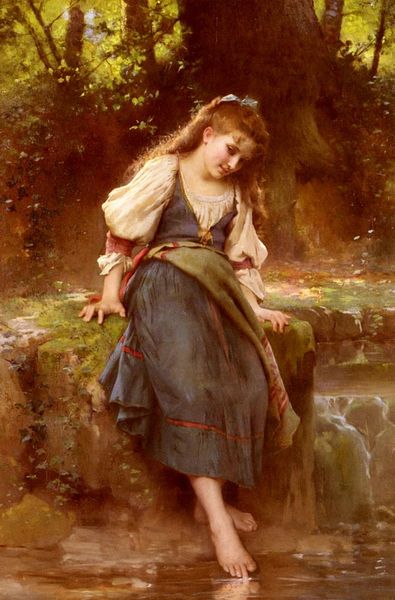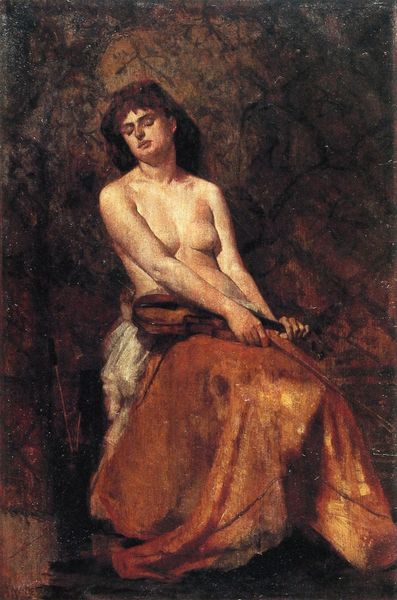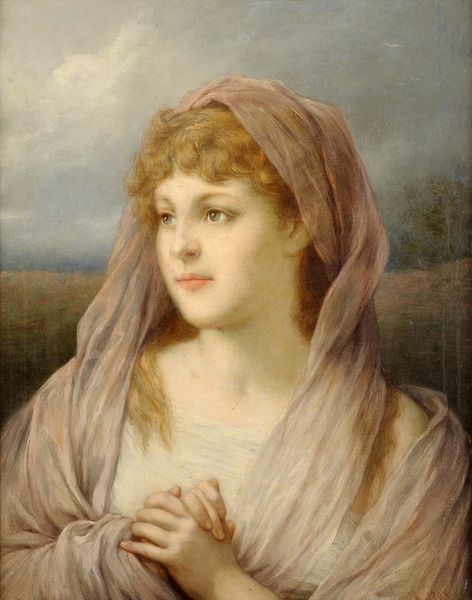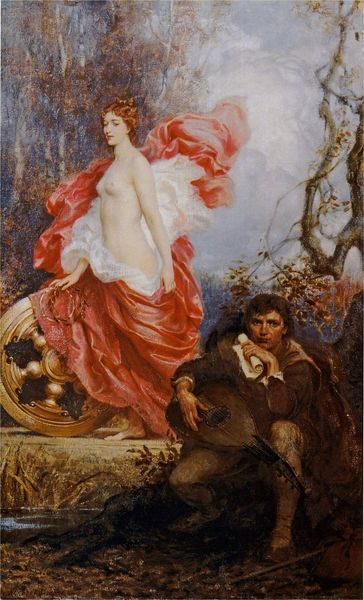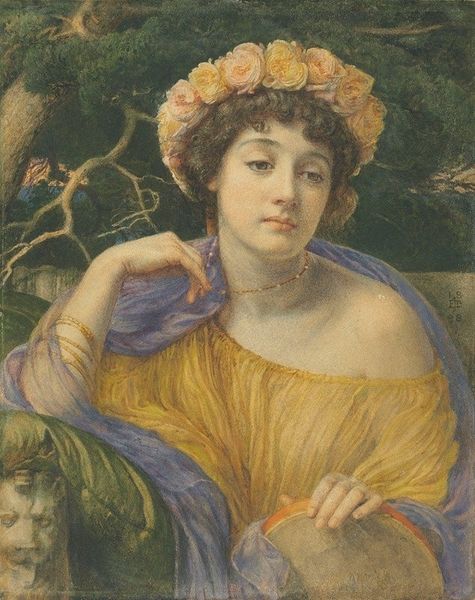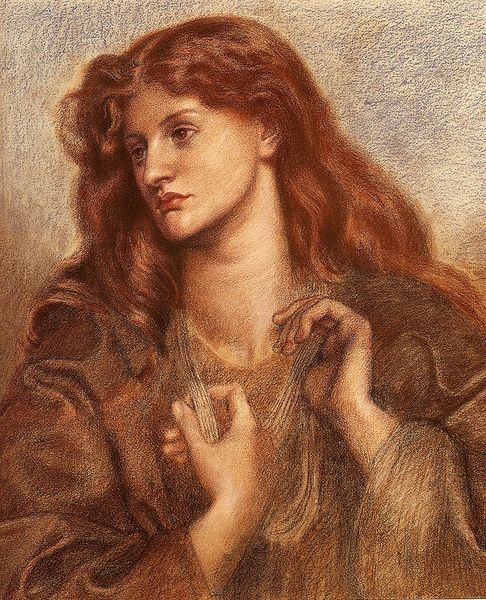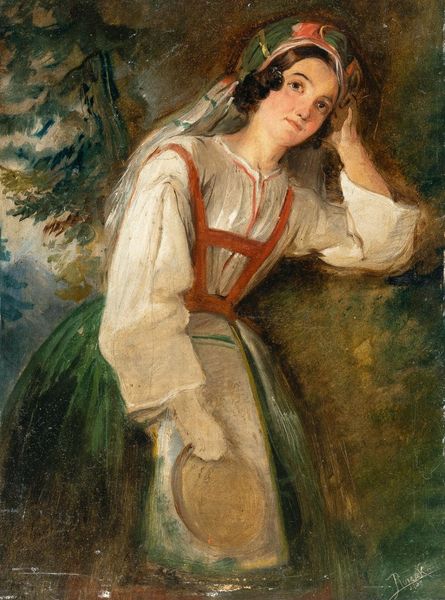
Copyright: Public domain
Curator: What an evocative portrait! Arnold Böcklin painted this in 1872, titling it "Euterpe." It now resides at the Hessisches Landesmuseum Darmstadt. The rendering in oil gives the artwork an undeniably tactile quality. What strikes you most immediately? Editor: The scale, actually. While it evokes classical themes, there’s a quiet intimacy here. It doesn't scream history painting; it whispers a more personal, internalized myth. The subject's gaze suggests inward reflection. Curator: Absolutely, and Böcklin was a master of crafting atmosphere through material choices. The very texture of the oil paint seems to add depth to the surrounding landscape. Take note of the red fabric. Its materiality almost speaks volumes—of wealth, patronage, access to pigment. Editor: Which prompts thoughts of access to, and interpretation of, classical narratives during the period. Museums and galleries were beginning to shape public understanding of mythology in new ways. The figure of Euterpe becomes a site where the historical intersects with individual interpretation. The flute is displayed for our consideration. Is this artwork commenting on access to making and interpreting art for wider audiences? Curator: Good question. Look at the landscape too; notice the trees as pillars, supporting, yet being separate from Euterpe. It almost emphasizes a constructed and contrived interpretation of this space as related to both art and classical subjects. Editor: And the museum displaying this now, places its own frame around that constructed-ness. It becomes a conversation between Böcklin, the patron, Euterpe, and the public that has the honor of interpreting this tableau throughout time. It prompts consideration of how these stories get re-contextualized again and again, even within our modern sensibilities. Curator: Right, its place within the museum now adds to this layered discourse. I find myself looking anew at the materiality and asking if the texture invites us to challenge the authority within its production as well as its setting. Editor: It's that persistent layering, that ongoing process of institutional and individual interpretation, that I'll continue to reflect on. It brings questions about imagery of muses into sharper focus. Curator: Precisely. It makes you wonder how the ongoing interpretation will add new layers of interpretation for museum visitors and art historians moving forward.
Comments
No comments
Be the first to comment and join the conversation on the ultimate creative platform.
